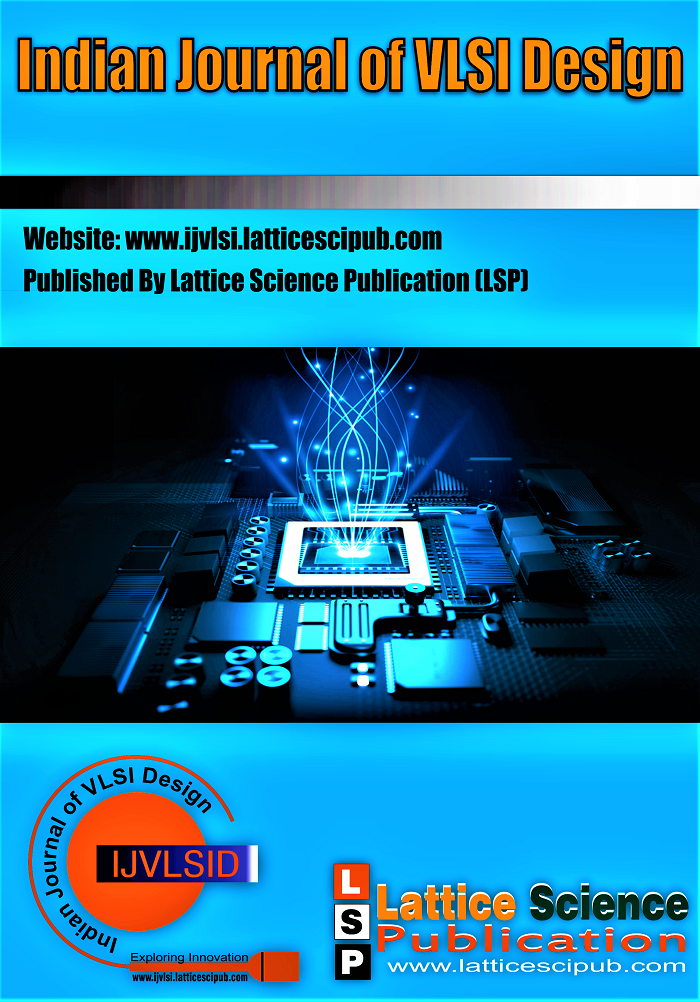An Approach for the Reduction of Unwanted Edges in Contour Detection Based on Local Filtering
Main Article Content
Abstract
In this paper, an approach for the reduction of unwanted edges in contour detection based on local filtering is presented. Our approach can be used as a preprocessing step before contour detection. Also our approach is useful for object recognition based on feature extraction tasks, because many contour detection methods can’t delete all unwanted edges carefully. Our method consists of a computational algorithm that has 7 steps. Including smoothing, edge detection, smoothing, decreasing of pixels, thresholding, local filtering, and mask creation respectively. We use smoothing for adhering neighbor edge pixels and weakening alone edge pixels. So we can amplify the correct edge pixels and attenuate unwanted edge pixels by smoothing the edge image. In local filtering, we use a proposed casual template that determines noisy regions and correct regions and therefore can create a mask matrix that its elements related to mentioned regions. Finally we can use the “mask matrix” for improving contours by using a “And” operator and we ensure final contour that has a few context effect.
Downloads
Article Details

This work is licensed under a Creative Commons Attribution-NonCommercial-NoDerivatives 4.0 International License.
How to Cite
References
Blakemore, C., Tobin, E.A., 1972. Lateral inhibition between orientation detection the cat's visual cortex, Exp. Brain Res. 15 436-440. [CrossRef]
Basturk, A., Gunay, E., 2008. Efficient edge detection in digital images using a cellular neural network optimized by differential evolution algorithm, Expert systems with Applications xxx xxx-xxx. [CrossRef]
Canny, J.F., 1986. A computational approach to edge detection, IEEE Trans. Pattern Anal. Mach. Intell. 8 (6) 679-698 [CrossRef]
Chang, S.C., 2003. Content-based image retrieval using momentpreserving edge detection, Image and Vision Computing 21 (9) 809-826. [CrossRef]
Chan, D.Y., Chaoming Hsu, R., 2008. Robust shape-preserving contour tracing with synchronous redundancy pruning, Pattern Recognition Letters 29 569-579 [CrossRef]
Grigorescu, C., Petkov, N., Westenberg, M.A., 2003. Contour detection based on nonclassical receptive field inhibition, IEEE Trans. Image Precess. 12 (7) 729-739. [CrossRef]
Grigorescu, C., Petkov, N., Westenberg, M.A., 2004. Contour and boundary detection improved by surround suppression of texture edge, Image Vis. Comput. 22 (8) 609-622. [CrossRef]
Heitger, F., Rosenthaler, L., von der Heydt, R., Peterhans, E., Kubler, O., 1992. Simulation of neuronal contour mechanisms: from simple to end-stoped cells, Vis. Res. 32 963-981 [CrossRef]
Higgins, W.E., Hsu, C., 1994. Edge detection using 2D local structure information, Pattern Recognition. 27 (2) 277-294. [CrossRef]
Heath, M., Sarkar, S., Sanocki, T., Bowyer, K., 1998. Comparison of edge detectors: a methodology and initial study, Computer Vision and Image Understanding 69 (1) 38-54. [CrossRef]
Hou, Z.J., Wei, G.W., 2002. A new approach to edge detection, Pattern Recognition 35 (7) 1559-1570. [CrossRef]
Iverson, L.A., Zucker, S.W., 1995. Logical/Linear operator for image curves, IEEE Trans. Pattern Anal. Match. Intell. 17 (10) 982-996.
[CrossRef]
Li, Z., 1999. Visual segmentation by contextual influenses via intracortical interaction in primary visual cortex, Comput. Neural Syst. 10 [CrossRef]
Mehrotra, R., Namuduri, K.R., Ranganathan, N., 1992. Gabor filterbased edge detection, Pattern Recognit. 25 (12) 1479-1494.[CrossRef]
Ming-Huwi, Horng., Ren-Jean, Liou., Jun, Wu., 2010.Parametric active contour model by using the honey bee mating optimization Expert Systems with Applications, 37 (10) 7015-7025. [CrossRef]
Rizzolatti, G., Camarda, R., 1975. Inhibition of visiual responces of single units in the cat visual area of the lateral suprasylvian gyrus (Clare-Bishop area ) by the introduction of a second visiual stimulus, Brain Res. 88 (2) 357-361. [CrossRef]
Tang, Q., Sang, N., Zhang, T., 2005. A Neural Network Model for Exteraction of Salient Contour. International Symposium on Neural
Networks (ISNN'05), Springer-Verlag, Berlin Heidelberg, 316, 316-320. [CrossRef]
Tang, Q., Sang, N., Zhang, T., 2007. Contour detection based on contextual influences, Image and vision computing 25 1282-1290. [CrossRef]
Wilikinson, M.H.F., 1998. Optimizing edge detectors for robust automatic threshold selection: coping with edge curvature and noise, Graph. Models Image process. 60 (4) 385-401. [CrossRef]
Wong, H-S., Caelli, T., Guan, L., 2000. A model-based neural network for edge characterization, Pattern Recognition 33 427-444. [CrossRef]
Yu, Y.H., chang, C.C., 2006. A new edge detection approach based on image context analysis, Image and vision computing 24 1090-1102.
[CrossRef]
Ying, Zheng., Guangyao, Li., Xiehua, Sun., Xinmin, Zhou., 2009. Geometric active contours without re-initialization for image segmentation Pattern Recognition 42 (9), 1970-1976. [CrossRef]
Ying, Zheng., Guangyao, Li., Xiehua, Sun., Xinmin, Zhou., 2009. A geometric active contour model without re-initialization for color
imagesImage and Vision Computing, 27 (9), 1411-1417. [CrossRef





